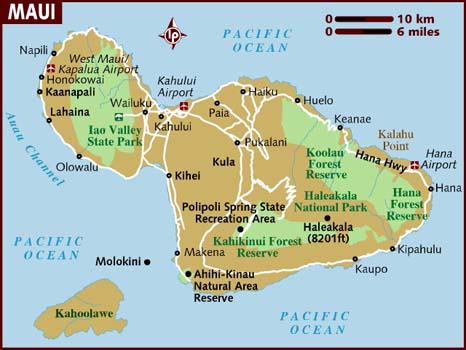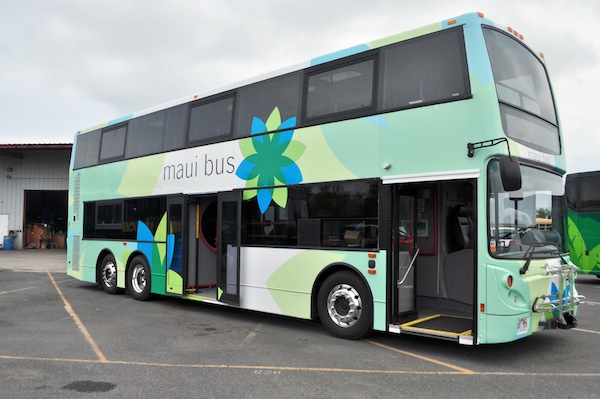 In this two-part report, Curbing Cars intern Matt Varcak transports us away from dreary weather and takes us to Hawaii, a surprising hot spot for public transportation. Today, he looks at Maui.
In this two-part report, Curbing Cars intern Matt Varcak transports us away from dreary weather and takes us to Hawaii, a surprising hot spot for public transportation. Today, he looks at Maui.
By Matthew Varcak
Hawaii’s third most populous island, Maui, is also its second-largest at roughly 727 square miles. And in the past dozen years, the demand for public transportation has exploded.
The Maui Bus program began in 2002 as a pilot program to accommodate the increased need for affordable transportation. By the end of 2003, the program had 101,508 passenger boardings, and by the end of 2004 that number had grown to 117,490.
For the fiscal year 2013, 2.51 million passengers boarded the Maui Bus system.
And these are not all tourists. According to Marc Takamori, deputy director for the County of Maui Department of Transportation, 80 percent of the passengers are locals. Takamori also said there is a demand from riders to increase the frequency of service in addition to adding more routes into areas not currently served.
 The Maui Bus system includes fixed, commuter and paratransit routes. Roberts Hawaii provides service for the fixed routes and commuters, while Maui Economic Opportunity handles the paratransit service.
The Maui Bus system includes fixed, commuter and paratransit routes. Roberts Hawaii provides service for the fixed routes and commuters, while Maui Economic Opportunity handles the paratransit service.
The four commuter routes are designed for early morning and evening commuters, augmenting the existing services. All routes are operated seven days a week, including holidays. Unlike Oahu or the Island of Hawaii, transfers are not allowed, except for on the commuter routes.
The program offers various types of passes which make riding the bus affordable. A general boarding pass for all routes costs $2. For fixed and paratransit routes, one can purchase a daily pass for $4. “Allowing any type of daily passes on paratransit is typically unheard of,” Takamori said in an email.
Monthly passes are also available for all services. They range from $25 for those over the age of 55, to $30 for students and those with disabilities, and $45 for a general boarding pass.
The program has 69 vehicles in its fleet which, on fixed routes alone, log approximately 1.62 million miles annually. The Maui Bus system costs approximately $10.7 million annually to operate.
Mass transit on all three of these islands continues to grow with the demand. In 10 years, Maui increased its ridership by over 2,300 percent.
The Island of Hawaii has had to increase fares twice within the past three years to remain operational. TheBus on Oahu has twice been named America’s Best Transit System by the American Public Transportation Association.
Besides mass transit, the state of Hawaii also provides ridesharing, vanpooling, and carpool matching services to help eliminate traffic congestion and pollution and to keep Hawaii beautiful.
Have you used public transit in Hawaii? Let us know about your experience.
You can read all of Matt’s stories here.
